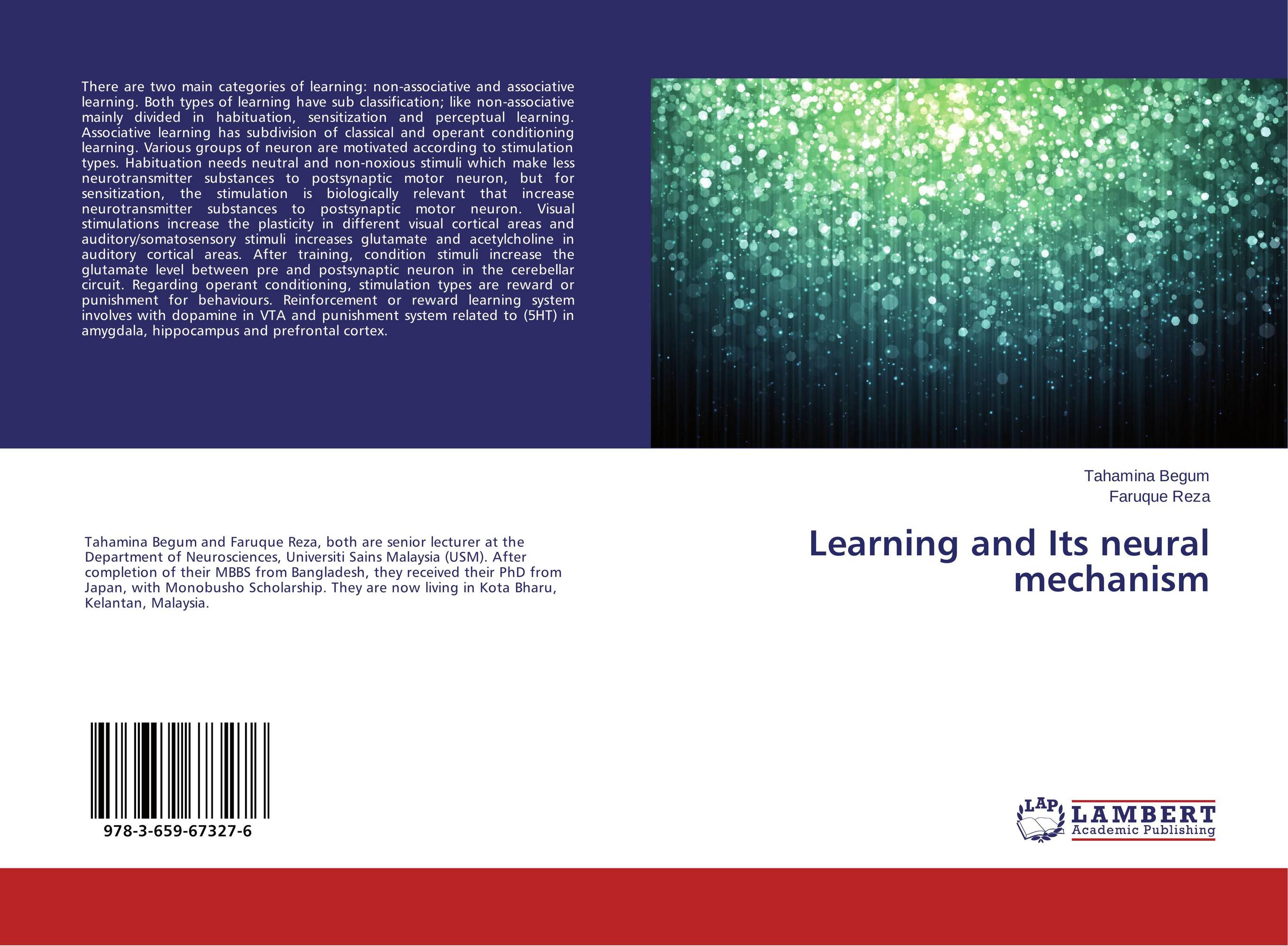| Поиск по каталогу |
|
(строгое соответствие)
|
- Профессиональная
- Научно-популярная
- Художественная
- Публицистика
- Детская
- Искусство
- Хобби, семья, дом
- Спорт
- Путеводители
- Блокноты, тетради, открытки
Learning and Its neural mechanism.

В наличии
| Местонахождение: Алматы | Состояние экземпляра: новый |

Бумажная
версия
версия
Автор: Tahamina Begum and Faruque Reza
ISBN: 9783659673276
Год издания: 2015
Формат книги: 60×90/16 (145×215 мм)
Количество страниц: 52
Издательство: LAP LAMBERT Academic Publishing
Цена: 17601 тг
Положить в корзину
| Способы доставки в город Алматы * комплектация (срок до отгрузки) не более 2 рабочих дней |
| Самовывоз из города Алматы (пункты самовывоза партнёра CDEK) |
| Курьерская доставка CDEK из города Москва |
| Доставка Почтой России из города Москва |
Аннотация: There are two main categories of learning: non-associative and associative learning. Both types of learning have sub classification; like non-associative mainly divided in habituation, sensitization and perceptual learning. Associative learning has subdivision of classical and operant conditioning learning. Various groups of neuron are motivated according to stimulation types. Habituation needs neutral and non-noxious stimuli which make less neurotransmitter substances to postsynaptic motor neuron, but for sensitization, the stimulation is biologically relevant that increase neurotransmitter substances to postsynaptic motor neuron. Visual stimulations increase the plasticity in different visual cortical areas and auditory/somatosensory stimuli increases glutamate and acetylcholine in auditory cortical areas. After training, condition stimuli increase the glutamate level between pre and postsynaptic neuron in the cerebellar circuit. Regarding operant conditioning, stimulation types are reward or punishment for behaviours. Reinforcement or reward learning system involves with dopamine in VTA and punishment system related to (5HT) in amygdala, hippocampus and prefrontal cortex.
Ключевые слова: habituation, Sensitization, neural mechanism, Associative learning, nonassociative learning



